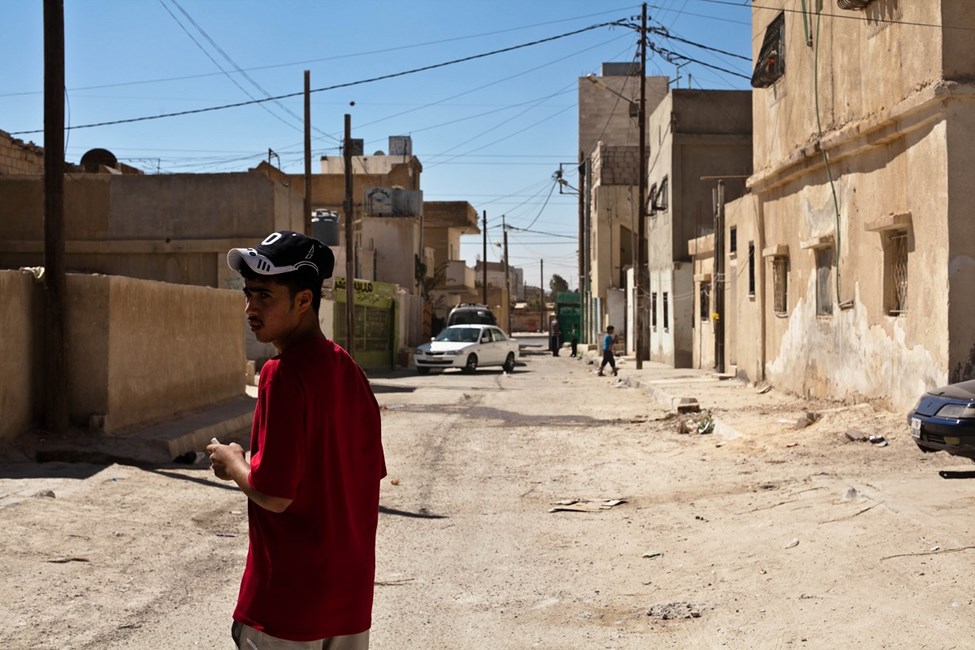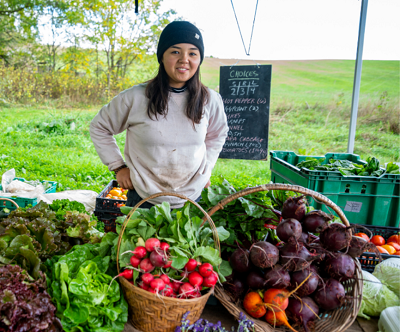 As the climate crisis deepens, environmental stress will produce not only more extreme weather events but also new slow onset hazards - such as droughts and epidemics. Climate-related hazards can build up and have profound effects on societies by compounding and accumulating risks. This will make communities progressively more vulnerable and increase the likelihood, severity and complexity of humanitarian crises and displacement situations. For example, rapidly sheltering people fleeing violence today needs to consider the risk of a COVID-19 hotbed.
As the climate crisis deepens, environmental stress will produce not only more extreme weather events but also new slow onset hazards - such as droughts and epidemics. Climate-related hazards can build up and have profound effects on societies by compounding and accumulating risks. This will make communities progressively more vulnerable and increase the likelihood, severity and complexity of humanitarian crises and displacement situations. For example, rapidly sheltering people fleeing violence today needs to consider the risk of a COVID-19 hotbed.
We already know that getting global rapid urbanisation right can help achieve far reaching sustainability objectives relevant to improving humanitarian outcomes. This is illustrated by the target dedicated to preventing deaths and losses in disasters under the United Nations’ Sustainable Development Goal 11 - Sustainable Cities and Communities[1]. In the lead up to COP26 in Glasgow, we are launching a report that shines a light on some of the ways global urbanisation can help displaced people recover from displacement - and benefit host communities.
Forced displacement is increasingly common, with more people forced from home than ever before. Many of them can find refuge in and around small and medium-sized towns - where most global urban growth is expected. These places already have fewer services available and receive less development support from national and international actors. However, many towns and cities could turn displacement into an opportunity: displaced people can help local economies to thrive by contributing their knowledge, social networks, entrepreneurial abilities, labour, etc. to expanding urban centres.
Successfully responding to such processes in parallel will be a major challenge in the next decade. Aligning interventions to respond to displacement with local trajectories of inclusive urban growth can become an avenue for capturing part of the prosperity that generally accompanies urbanisation, supporting recovery and contributing to the sustainable development of host communities. For example, in Uganda, the national strategy Uganda 2040, identifies opportunities to align the growth of secondary towns, such as Arua, with a development approach to responding to displacement.

However, in many places that have little planning capacity such opportunities might not have been identified. For example, the China-Pakistan Economic Corridors are expected to mostly benefit the already more affluent eastern Pakistan, with fewer gains in terms of connectivity in the west [2]. However, that is where hundreds of thousands of Afghan refugees are hosted in settlements - in many cases for over four decades.
In their respective time cycles, both urbanisation and displacement processes are expected to happen rapidly. As displacement situations become increasingly protracted, disconnected locations to host the displaced can lock in inequalities and favour unsustainable patterns of spatial development and regional inequalities. Spatial decisions taken during a response can have long lasting consequences and considering their potential in terms of development might make a significant difference for displaced people and their host communities. However, due to political opposition, lack of capacity and the rapid evolution of many humanitarian situations, the displaced can be cut off from the opportunities of urbanisation and remain stuck in disconnected places putting growing pressures on the capacity of humanitarian actors.
Our new report aims to advance spatial coordination across the efforts of humanitarian and development actors so that they can jointly build a stronger consensus around locations to host the displaced that are not only safe, but also accessible, connected to employment opportunities, aligned with prevalent settlement patterns and, where these exist, contribute to development plans and strategies. We brought together the evidence on how humanitarian response to displacement influences urbanisation processes and land values in a place, the gaps in our current understanding of inclusive urban economic growth in displacement settings and the conditions for it to happen. In the report we also consider the obstacles to interpreting displacement data according to their urban context, the planning expertise used by different actors in a displacement setting and the tensions between planning objectives and humanitarian principles.
Our report builds on the learning accumulated over more than a decade, during which the context of humanitarian response to displacement has gradually been shifting towards urban areas and the need to link humanitarian and development efforts has been formalised in the humanitarian-development-peace nexus. Today the majority of the 80 million forced from home - 1% of the global population - are estimated to find refuge in cities, however it is not clear how those hosted in expanding peri-urban areas and in the outskirts of towns are included in this count.
Internal displacement is on the rise and traditional solutions for refugees - return, resettlement, and local integration - are becoming more elusive. In this context, the opportunities to support the self-reliance of the displaced while supporting towns and cities to grow sustainably through context-appropriate and strengthened planning approaches become increasingly relevant.
FOOTNOTES
1 See all the SDG11 targets and at https://sdgs.un.org/goals/goal11
2 Zhao J, Sun G and Webster C (2021) Does China-Pakistan Economic Corridor improve connectivity in Pakistan? A network assessment. Accessed on 13-08-2021 at https://bit.ly/2VP5KDX


